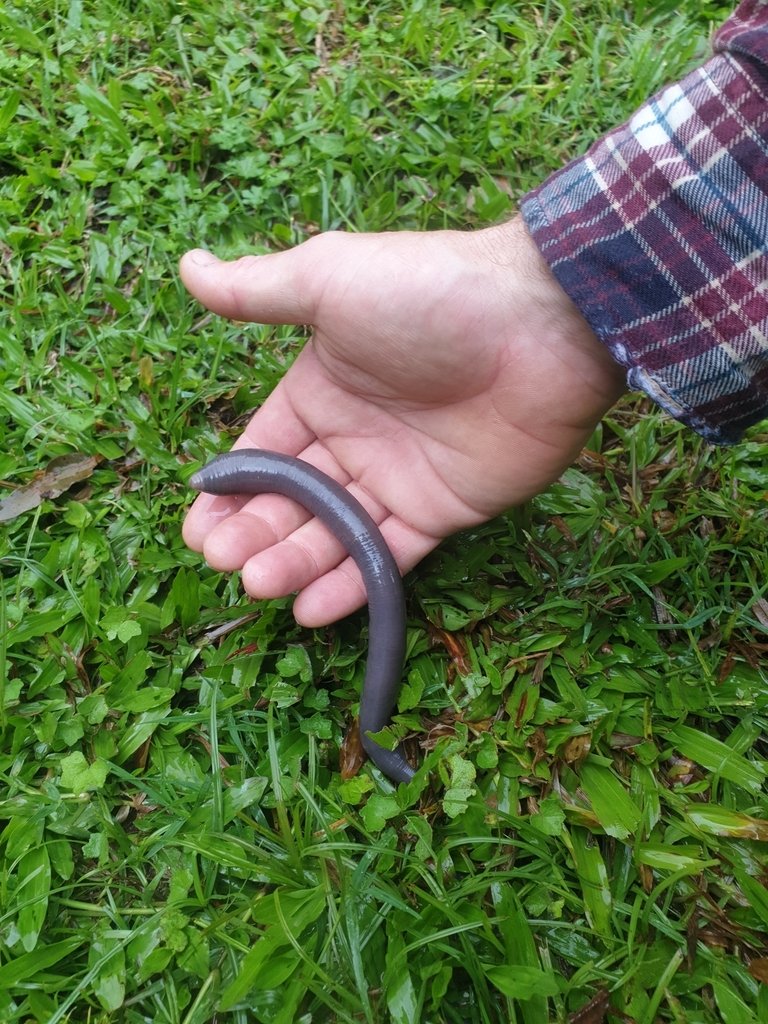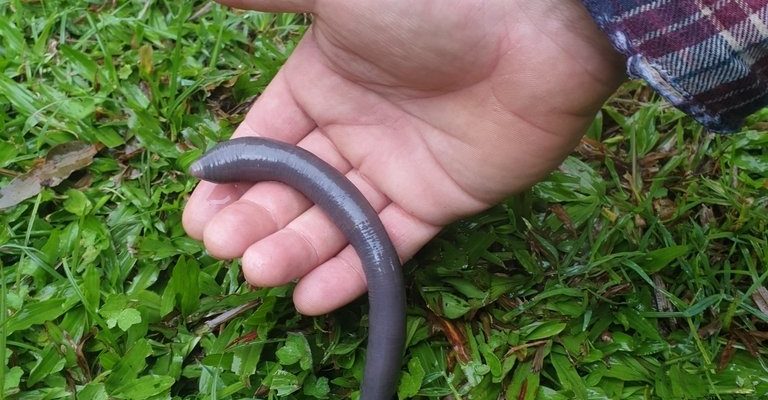
These remarkable worms can grow up to 3 meters long—over 9 feet! Now, that’s something you wouldn’t want to accidentally step on during a nature walk. The Giant Gippsland earthworm isn’t just about size; it’s also an important part of the soil ecosystem, helping with aeration and nutrient distribution. If you’re curious about where they live, how they contribute to their habitat, and what makes them unique, you’re in for a treat!
What Does the Giant Gippsland Earthworm Look Like?
The appearance of a Giant Gippsland earthworm is as impressive as its size. These worms have a robust, segmented body that often looks shiny or moist. Their skin is typically a dark purple or brown, giving them a somewhat regal look. The texture is smooth, and they can be quite squirmy—an important feature for a creature that spends much of its life underground.
You might imagine worms as being thin and frail, but these guys are built differently. The diameter of a Giant Gippsland earthworm can be up to about 2.5 centimeters (1 inch), making them significantly bulkier than your standard garden variety. When they move, they can push through the soil with surprising speed, leaving behind tunnels that allow air and water to penetrate deeper into the ground.
If you spot one, you might notice their clitellum, a thickened band around their body that’s crucial for reproduction. This clitellum secretes a cocoon where the eggs are laid, ensuring the next generation can continue the legacy of these magnificent creatures.
Where Do Giant Gippsland Earthworms Live?
Giant Gippsland earthworms are primarily found in the *Gippsland* region of southeastern Australia. Specifically, they thrive in moist, rich soils along the hillsides. They prefer pastures, meadows, and areas with abundant vegetation where they can easily burrow and feed.
It’s interesting to note that their habitat often overlaps with agricultural land. Farmers in the region have come to appreciate these worms because they help improve soil structure. By creating tunnels, they aerate the soil, which helps crops grow better. So, while they might be tiny, their impact is profound!
Unfortunately, their specific habitat makes them vulnerable to environmental threats. Urban development and agricultural practices can destroy or alter their living spaces. Conservation efforts are becoming increasingly important to protect the Giant Gippsland earthworm’s natural habitat, ensuring these remarkable creatures have a home for years to come.
The Role of Giant Gippsland Earthworms in the Ecosystem
Giant Gippsland earthworms play a crucial role in maintaining the health of their ecosystems. They are nature’s little gardeners, influencing soil health and fertility. As they burrow through the ground, they help mix organic matter with soil, which is critical for supporting plant life.
Here’s the thing: as these earthworms consume organic material, they break it down into nutrient-rich castings, which are an excellent natural fertilizer. This process not only enhances soil quality but also encourages a diverse range of plant life. Think about it—healthy plants mean a thriving ecosystem, which benefits everything from insects to larger animals.
Moreover, their burrowing activities contribute to soil aeration, allowing water and oxygen to reach plant roots more efficiently. This function is essential, especially in times of heavy rains or drought. So, while they might seem humble, the Giant Gippsland earthworm is a silent hero in maintaining a balanced ecosystem.
How Do Giant Gippsland Earthworms Reproduce?
Reproduction in Giant Gippsland earthworms is quite a fascinating process. They are hermaphrodites, which means each worm has both male and female reproductive organs. During mating, two worms will align themselves ventrally and exchange sperm. After mating, a cocoon forms around the clitellum during the next few days.
Once the cocoon is secreted, it will eventually fall into the soil. Inside, the earthworms develop before hatching as tiny versions of their parents. The process may take several weeks before the young earthworms emerge, ready to begin their journey underground.
This reproductive strategy is essential for their survival, especially since their population can be threatened by habitat loss and environmental changes. Understanding their life cycle helps conservationists work towards protecting these amazing creatures.
Threats to the Giant Gippsland Earthworm
Even though the Giant Gippsland earthworm is a resilient creature, it faces several threats that could jeopardize its survival. Habitat destruction is the most significant issue. Urban development, farming, and changes in land use can disrupt their natural environments, making it hard for them to thrive.
Pollution is another concern. Chemicals used in agriculture can seep into the soil and waterways, adversely affecting these earthworms and their habitats. Soil compaction from heavy machinery can also prevent them from burrowing effectively.
Conservation efforts are underway to protect the Giant Gippsland earthworm. Organizations and local communities are working to raise awareness and create more sustainable farming practices to help preserve their habitats. Each little effort counts!
Why Are Giant Gippsland Earthworms Important to Us?
You might be wondering why we should care about a giant worm. Well, the importance of Giant Gippsland earthworms extends beyond their impressive size. These earthworms are a vital part of maintaining healthy soil, which supports the growth of crops and plants that we rely on for food.
Moreover, they serve as indicators of environmental health. The presence of these worms signals a balanced, rich ecosystem. Conversely, their decline could hint at larger environmental issues, like soil degradation or pollution.
Protecting the Giant Gippsland earthworm is not just about saving a species; it’s about ensuring the health of our planet. By appreciating and understanding these creatures, we can collectively work on sustainable practices that benefit our environment.
The Giant Gippsland earthworm may not be the most famous animal, but it certainly deserves our attention. From its impressive size to its vital role in ecosystems, this creature showcases the remarkable biodiversity of our planet.
Protecting these earthworms means protecting our soil and, ultimately, our food sources. As we continue to learn about the Giant Gippsland earthworm and its habitat, we become better stewards of the environment. So, the next time you come across a worm—no matter the size—take a moment to appreciate its role in the big picture of life on Earth. Every creature has a story, and the Giant Gippsland earthworm’s story is one worth sharing!

